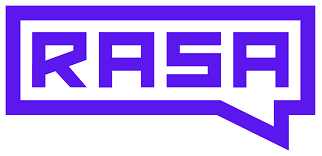Abstract: This white paper provides an in-depth comparison of Botpress and Rasa, two leading open-source chatbot frameworks. We examine their core features, strengths, and weaknesses, and explore their suitability for various enterprise use cases. Additionally, we include industry use cases, technical architecture, security considerations, and references to guide decision-makers in selecting the appropriate chatbot development platform.
White Paper: Botpress vs. Rasa - A Comparative Analysis for AI-Powered Chatbots
Abstract: This white paper provides an in-depth comparison of Botpress and Rasa, two leading open-source chatbot frameworks. We examine their core features, strengths, and weaknesses, and explore their suitability for various enterprise use cases. Additionally, we include industry use cases, technical architecture, security considerations, and references to guide decision-makers in selecting the appropriate chatbot development platform.
1. Introduction
The rise of AI-powered conversational agents has driven demand for robust chatbot frameworks. Botpress and Rasa are two prominent solutions catering to different needs. Botpress offers a user-friendly, visual approach, while Rasa provides extensive natural language processing (NLP) capabilities and customizability. This paper aims to help organizations assess which framework best aligns with their business goals and technical requirements.
2. Key Differences Between Botpress and Rasa
2.1 User Interface & Usability
- Botpress: Provides a visual flow editor, allowing users to design conversations using a drag-and-drop interface. This makes it ideal for teams with limited coding experience.
- Rasa: Requires programming knowledge; built for developers who prefer coding custom chatbot logic and models. It allows for greater flexibility but comes with a steeper learning curve.
2.2 Natural Language Understanding (NLU)
- Botpress: Offers built-in NLU capabilities but relies more on rule-based approaches. While it can handle simple intents and entity recognition, it lacks advanced ML-driven conversation flows.
- Rasa: Focuses on ML-based intent and entity extraction with customizable pipelines. It allows developers to train models using deep learning techniques, making it suitable for complex conversational AI applications.
2.3 Customizability & Extensibility
- Botpress: Modular, allowing UI and integration extensions. Developers can extend functionalities with custom Node.js scripts.
- Rasa: Provides full control over ML models and pipelines, ideal for advanced AI customization. Developers can modify the pipeline, integrate with third-party NLP engines, and fine-tune models for better accuracy.
2.4 Deployment & Scalability
- Botpress: Offers one-click deployment via Botpress Cloud; scalable infrastructure provided by Botpress. It is designed for teams that want a quick and easy deployment solution.
- Rasa: Requires manual deployment; supports self-hosting and cloud deployments. It offers more flexibility but requires additional DevOps effort for scaling and maintenance.
2.5 Integration Capabilities
- Botpress: Includes built-in integrations for popular messaging platforms (WhatsApp, Slack, Messenger, etc.), making it easier for businesses to deploy chatbots across multiple channels.
- Rasa: Offers flexible API integrations but requires manual setup. It allows integration with various platforms, including custom backend services and third-party AI tools.
2.6 Pricing Model
- Botpress: Open-source with paid enterprise plans that offer additional features and dedicated support.
- Rasa: Open-source, with paid enterprise features under Rasa X, which provides enhanced analytics, testing, and deployment support.
3. Use Cases
3.1 Customer Support Automation
- Botpress: Ideal for businesses seeking quick deployment of automated customer service chatbots with predefined flows.
- Rasa: Suitable for enterprises needing dynamic, ML-powered customer support agents that improve over time through training.
3.2 Healthcare & Telemedicine
- Botpress: Used for appointment booking, FAQs, and patient support in hospitals.
- Rasa: Preferred for symptom-checking bots that utilize advanced NLP to understand complex user inputs and provide tailored responses.
3.3 Financial Services & Banking
- Botpress: Banks use it for automated FAQs, account balance inquiries, and simple transactional queries.
- Rasa: Supports secure, intent-based transaction handling, fraud detection chatbots, and personalized financial advice.
3.4 E-Commerce & Retail
- Botpress: Enables product recommendation chatbots with seamless integrations for e-commerce platforms.
- Rasa: Enhances conversational shopping experiences with personalized AI-driven responses, product comparisons, and predictive recommendations.
3.5 IT & DevOps Automation
- Botpress: Helps IT teams with automated troubleshooting guides and knowledge base retrieval.
- Rasa: Powers AI assistants for predictive analytics in IT support, automated incident resolution, and workflow automation.
4. Technical Architecture
4.1 Botpress Architecture
- Built on Node.js with a modular plugin system.
- Uses a state machine for managing conversation flows.
- Supports local or cloud-based deployment.
4.2 Rasa Architecture
- Consists of Rasa NLU (for intent recognition and entity extraction) and Rasa Core (for managing conversations).
- Uses machine learning-based policies for dialogue management.
- Can be integrated with external NLP engines such as Google Dialogflow or Microsoft LUIS.
5. Security Considerations
- Botpress: Offers built-in security features such as access control and encryption but relies on external hosting security measures.
- Rasa: Provides greater control over security since it supports self-hosting, allowing organizations to manage their own encryption, data storage, and privacy compliance.
6. Case Studies
6.1 Case Study: Retail Chatbot Deployment (Botpress)
A leading e-commerce company implemented Botpress to manage customer queries. The chatbot reduced response time by 60% and improved conversion rates by 20%.
6.2 Case Study: AI-Powered Insurance Assistant (Rasa)
An insurance provider deployed Rasa for policy inquiries and claims processing. The ML-driven chatbot improved efficiency and handled 40% of queries autonomously, reducing human agent workload.
7. Conclusion & Recommendation
- Choose Botpress if you require a low-code, fast-to-deploy chatbot with built-in integrations and a user-friendly interface.
- Choose Rasa for AI-driven, NLP-heavy applications requiring deep customization, machine learning-based training, and self-hosting options for enhanced security.
8. References
[1] https://stackshare.io/stackups/botpress-vs-rasa-nlu
[2] https://www.restack.io/p/botpress-answer-botpress-vs-rasa-cat-ai
[3] https://www.keencomputer.com/solutions/software-engineering/535-botpress-vs-rasa-a-deep-dive-into-voice-ai-agent-development
[4] https://forum.rasa.com/t/difference-between-rasa-and-botpress/4423
[5] https://www.saasworthy.com/compare/rasa-vs-botpress?pIds=3245%2C30091
